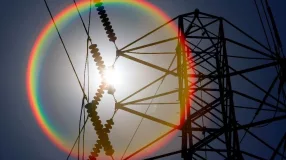From the tangible benefits cooling our homes during the dog days of summer and commuting on a natural gas-powered bus, to the downstream advantages of reducing greenhouse gas emissions and stimulating job growth, we probably don’t realize how much we depend on natural gas in our daily lives. However, without a comprehensive and reliable interstate pipeline system, this essential part of modern life would be far less accessible to many Americans.
The 7th annual Infrastructure Week represents companies and organizations across all types of infrastructure, united around one message: America’s future will be shaped by the infrastructure choices we make today. This week, we shed light on the many contributions that the U.S. pipeline network makes to our economy, and how natural gas infrastructure will continue to play an important role far into the future.
The United States is blessed with an abundance of clean-burning natural gas – so much so that the United States became a net exporter of natural gas in 2017, and in February of this year. While United States liquefied natural gas (LNG) exports increase, vast majority of our natural gas is exported to Canada and Mexico via pipelines. Indeed, the Energy Information Agency (EIA) estimates that U.S. pipeline exports of natural gas, especially to Mexico, will continue to rise through 2050, with the difference between U.S. exports and imports of natural gas reaching a high of 23 billion cubic feet per day in 2050. As the EIA states:
“Increasing natural gas exports to Mexico are a result of more pipeline infrastructure to and within Mexico, allowing for increased natural gas-fired power generation.”
Moreover, the United States is increasingly utilizing natural gas in electricity generation, making the development of new natural gas infrastructure critical to meeting future power demand. In its 2018 study — North America Midstream Infrastructure through 2035 — the INGAA Foundation found that the Southwest, including Texas, will see the greatest investment in oil and natural gas infrastructure through 2035, with “…a total CAPEX of $193 billion, accounting for 24 percent of the total infrastructure investment across the U.S. and Canada.”
In fact, infrastructure development will continue to play a vital role in stimulating job creation and economic growth throughout North America. Over the next two decades, infrastructure development will support an average of 725,000 U.S. jobs annually and add a combined total of $1.3 trillion, or an average of $70 billion annually, to the U.S. and Canadian GDPs. Federal taxes connected to infrastructure development are expected to amount to $238 billion, while taxes at the state and local level are estimated to total $204 billion through 2035. These benefits are substantial and widespread, even in states without new pipeline projects.
In a May 2019 study, The Role of Natural Gas in the Transition to a Lower-Carbon Economy, the INGAA Foundation found that natural gas and related infrastructure will play a critical role in the United States transition to a lower-carbon economy, acting as a foundation for the penetration of renewables in the energy landscape by adding significant baseload capacity and providing the flexibility and reliability needed to support U.S. economic output. Consequently, "the attributes of natural gas and our robust natural gas infrastructure mean that natural gas will remain an essential source of energy within a greener U.S. energy mix,” according to the report.
As we recognize Infrastructure Week, it is important to emphasize the benefits and contributions of both natural gas and natural gas infrastructure development. As demand for U.S. natural gas continues to grow — both domestically and abroad — pipelines and other natural gas infrastructure will continue to play an integral role in creating jobs and supporting economic growth in communities throughout the United States.






